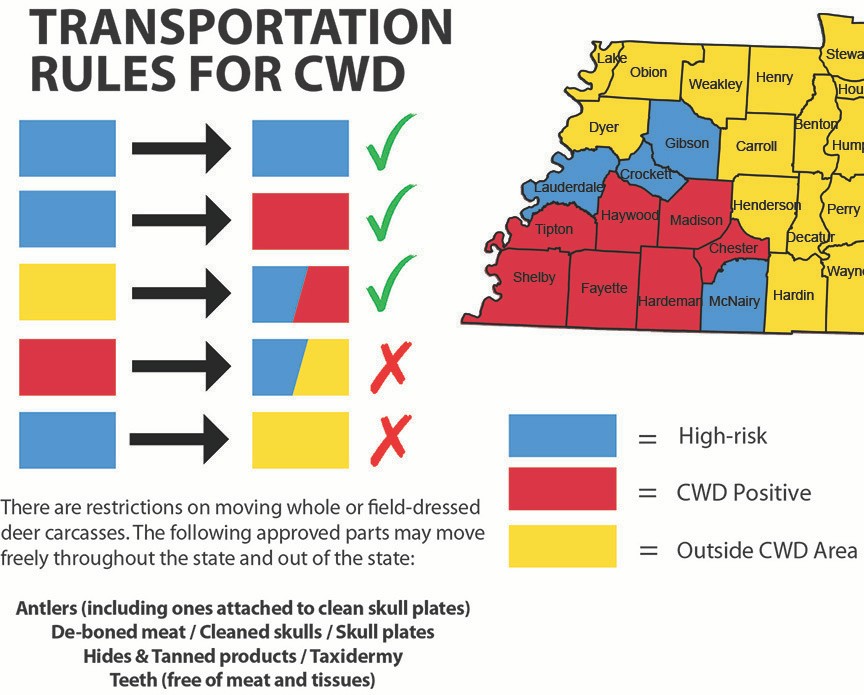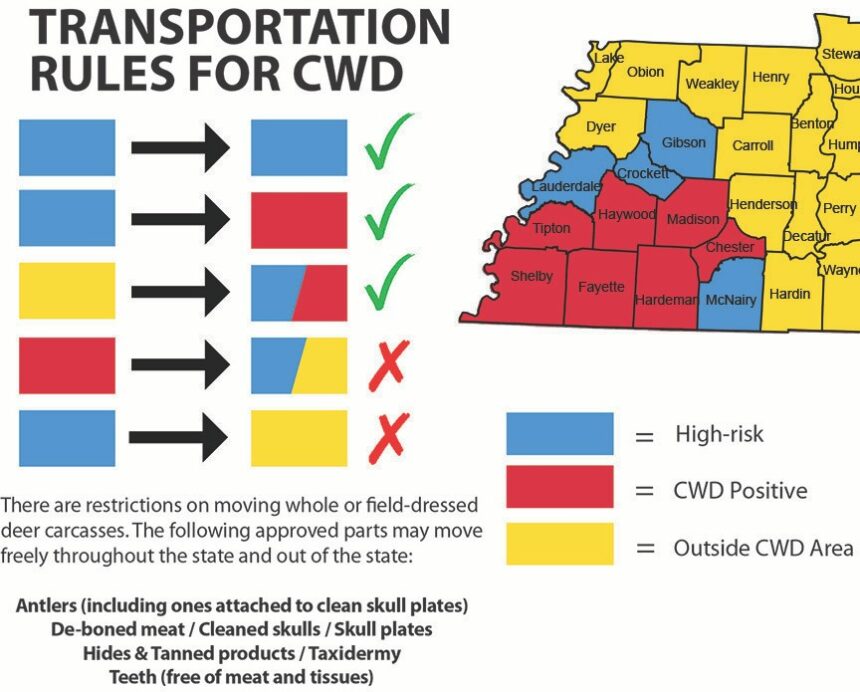
{Editor’s Note: This article includes updated details and was originally published on Sept. 9. and Sept. 25}
STATE NEWS — According to recent reports from the Tennessee Wildlife Resource Agency (TWRA), deer in two new Tennessee counties have now tested positive for Chronic Wasting Disease (CWD) and another county is now classified as high risk.
Deer tested positive in both Haywood and Chester counties and Lauderdale County is now classified as high risk. All three are located in southwest Tennessee about four hours from Moore County.
According to the TWRA, approximately 400 deer tested positive for CWD in southwest Tennessee during the 2019-20 deer season with the vast majority being from Hardeman and Fayette counties. Chester, Haywood, Madison, Shelby, and Tipton counties are CWD-positive as well. The Tennessee Wildlife Resources Agency tested more than 13,000 deer for CWD during the 2019-20 deer season.
Reports of infected deer are on the rise in middle Tennessee, according to Tennessee Wildlife Resource Association (TWRA) officials. The timing and details of these reports imply that HD deer reports are above average this year. Citizens and hunters have reported dead (or sick) deer in 20 counties, according to the TWRA.
“Reports are coming in daily as TWRA continues to monitor the situation,” said James Kelly, Deer Management Program Leader for TWRA. “If hunters or the public find sick or dead deer they are encouraged to report these animals to their local TWRA regional office.”
The last outbreak happened in 2017 but mainly in East Tennessee. The last statewide outbreak happened in 2007.
“Although some of the clinical symptoms are similar, it is important to not confuse HD with CWD (Chronic Wasting Disease),” said University of Tennessee Wildlife Veterinarian, Dr. Dan Grove. “Unlike CWD, HD is a virus and deer can survive infection and populations will eventually rebound following an outbreak. Incidence of HD tends to cycle up and down as the environmental conditions are right for the biting midge to breed. CWD, on the other hand, is actually a much greater concern because the causative agent known as prions persist in the environment for decades and in deer populations indefinitely.”
But you shouldn’t panic. HD diseases like Epizootic Hemorrhagic Disease (EHD) and Blue Tongue Virus (BTV) can’t be transmitted to humans. It’s not even transmitted from deer-to-deer. Deer are only infected by small midges, or biting two-winged flies. Once bitten by an infected midge, a deer can die as quickly as 36 hours.
Symptoms include loss of appetite, lethargy, weakness, respiratory distress, and swelling of the head. If hunters or landowners see deer on their property with any of these symptoms, they are encouraged to call the Tennessee Wildlife Resource local office at 615-781-6622.
Deer can survive the disease but will often be left with breaks in their hooves. If you harvest a deer with breaks of rings in hooves, you should also contact wildlife officials. •
{The Lynchburg Times is an independently owned and operated newspaper that publishes new stories every morning. Covering Metro Moore County government, Jack Daniel’s Distillery, Nearest Green Distillery, Tims Ford State Park, Motlow State Community College, Moore County High School, Moore County Middle School, Lynchburg Elementary, Raider Sports, plus regional and state news.}

